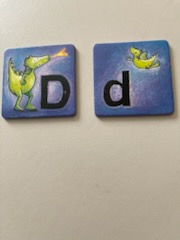Training in writing letters
Description
- Children may struggle with writing because they do not have good fine motor skills.
- They may have some problems understanding what letter represent the sounds.
Writing is demanding because we have to integrate memory, fine motor skills, perception skills, language skills and concentration in order to do it well. The teacher must ensure that a child has a good writing posture, in order to write well.
Children can become good at hand writing by writing regularly.
Material
Any appropriate writing material that is available.
Basic motor exercises
Encourage child´s attempts to write. Often the writing gradually moves from scribbling and forming strings of letters to an attempt to represent sounds with letters.
Have the children trace shapes, which the teacher makes in sand, clay, or on the board, using the finger or some pointed object.
The teacher can ask the pupils to connect two or more dots with a pencil, crayon or any writing object.
The teacher can draw two lines and ask the child to draw a line between the two lines.
Example: Draw two (2) parallel lines with some space between them. Ask the child to draw a line between them without touching either of them.

Writing letters
The teacher can discuss differences and similarities between capital letters and small letters.
Example: Write the letters “B” and “b”. Make the child understand the differences between them.
The teacher can make dotted letters and then have the child connect the dots to complete the letters.
Example: Make several dotted letters and ask the children to connect them so that they develop mastery
of writing letters.
The teacher can bring children who are having problems with some letters to the board and help them make the problem letter on the board.
Example: If a child has problems with writing the letter “b”, give the child practice on the board with a lot of assistance.
The teacher should give extra practice in writing for those children who confuse letters such as ‘d’ and ‘b’.
Example: Have some words that contain both ‘d’ and ‘b’ and help the children distinguish between them and write them in their books or on other writing material.